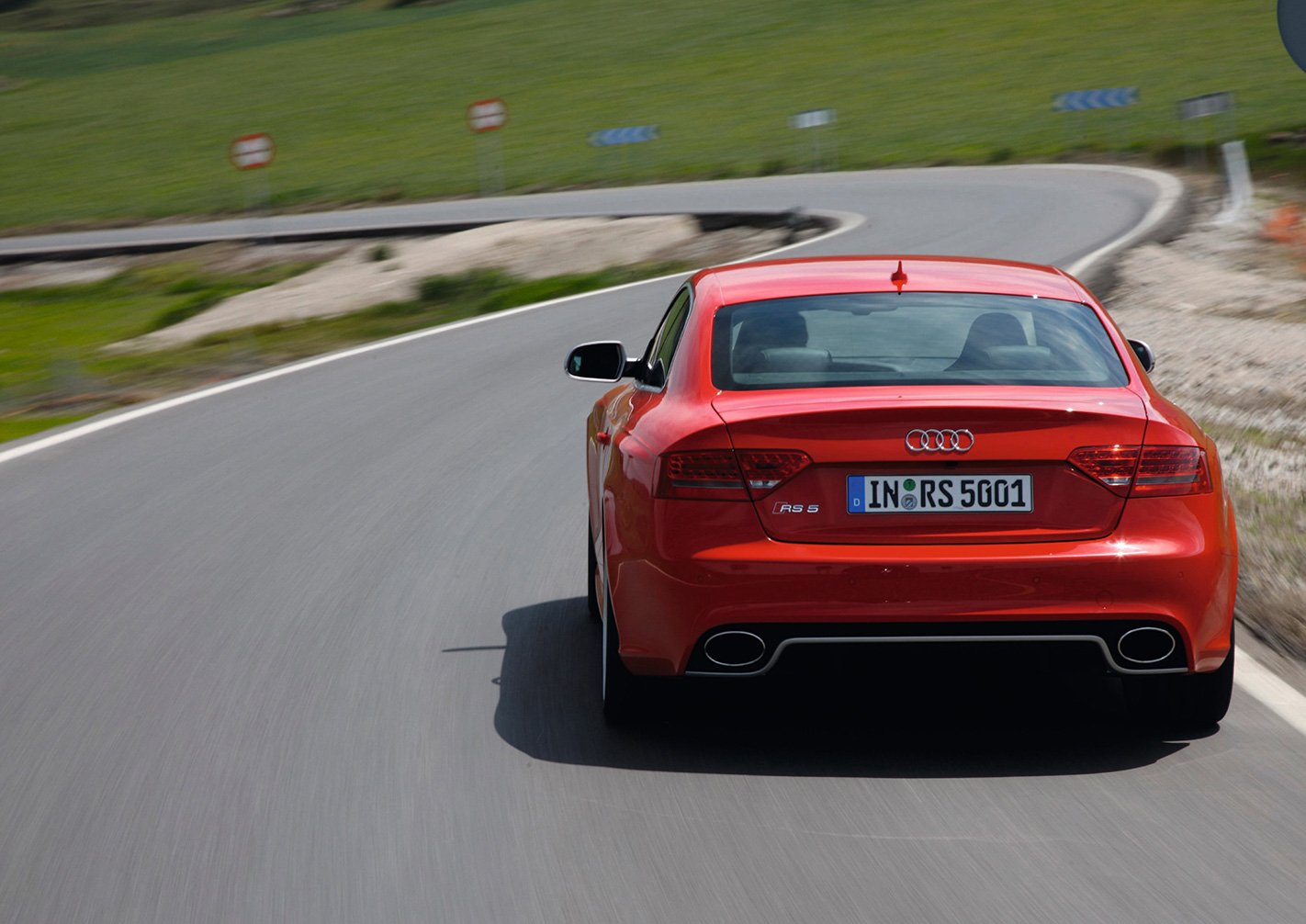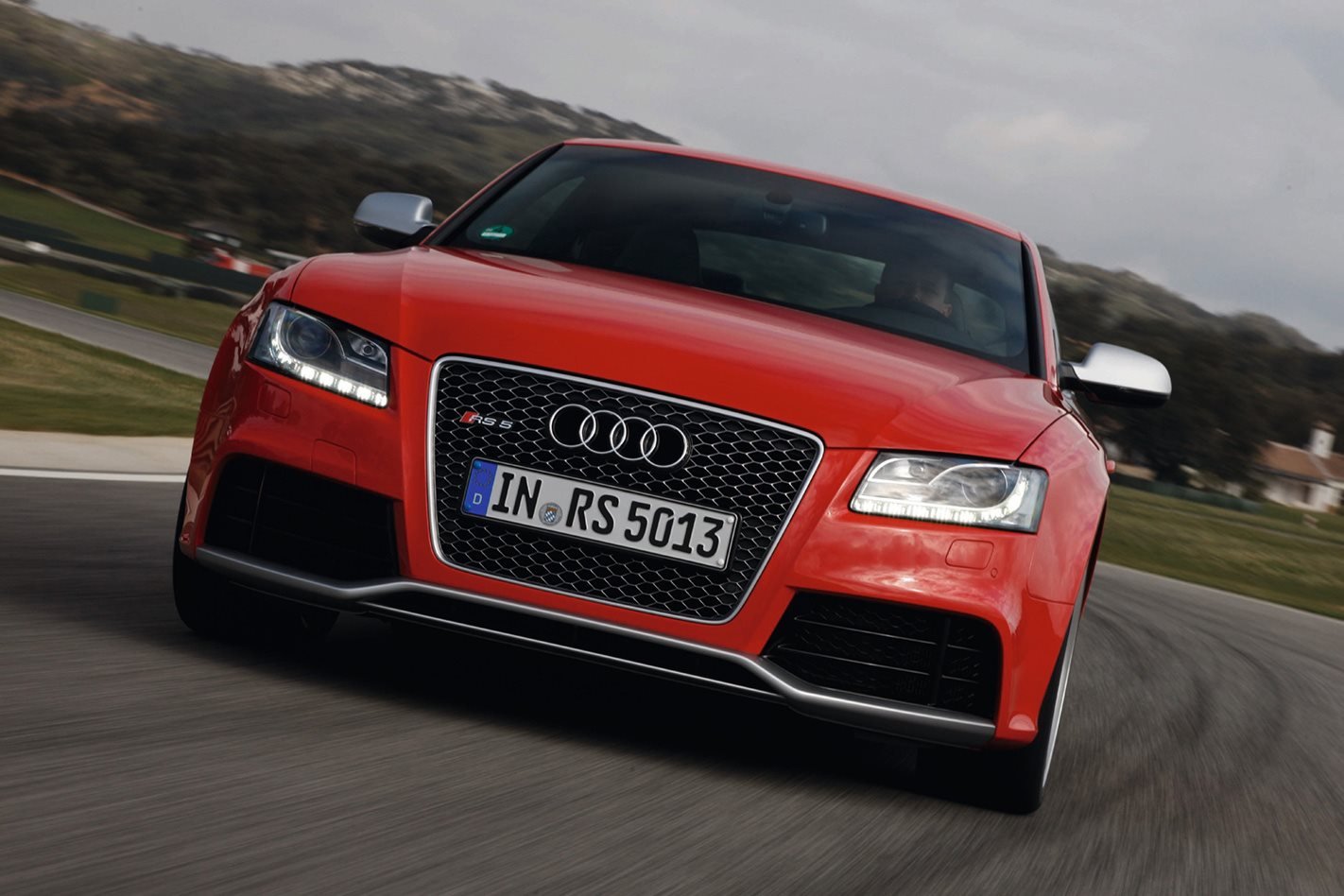By the end of 2014, Audi will have revamped almost the entire RS line-up.
In addition to the familiar TT RS coupe and roadster, the marque is readying the 2010 RS5, the 2011 RS4 Avant, the 2013 RS7 Sportback and the 2014 RS6 Avant.
And, fingers crossed, an RS3 Sportback. With the exception of the RS4/RS5’s 331kW 4.2-litre V8, all RS models are, or will be, powered by turbocharged engines.Why exactly did quattro GmbH opt for a high-revving normally-aspirated direct-injection eight-cylinder unit instead of a brand-new twin-turbo 3.0-litre V6? Stephan Reil, R&D chief of all Audi RS and R models, explains that “the high-revving V8 is better suited for this particular vehicle than the twin-turbo V6 we used for the first-generation RS4.
Considering the extra plumbing, exhaust complexity system and additional cooling, the weight penalty of the normally aspirated V8 is less than 20kg.
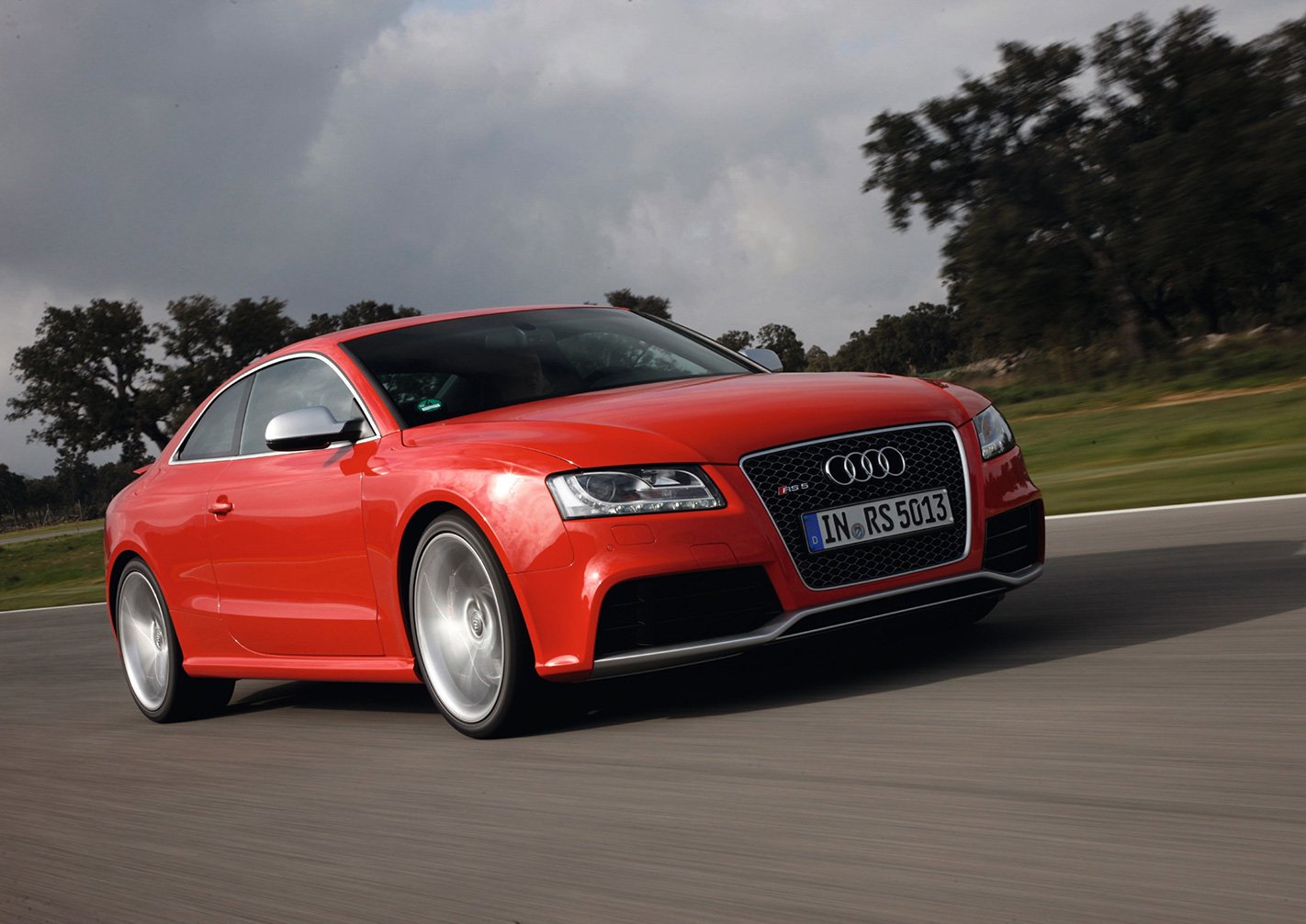
Closely related to the R8 5.2’s V10, the 4163cc FSI V8 delivers its 331kW at 8250rpm, up 22kW on the old RS4. Although the redline was pushed up to 8500rpm, the maximum torque – an identical 430Nm – is now available between a less-frantic 4000 and 6000rpm.
Engineering highlights include a double-barrel intake system with tumble blades, four adjustable overhead camshafts, common rail fuel injection and a switchable dual-chamber exhaust.For improved efficiency, Audi fitted low-friction pistons, a lightweight valvetrain, a belt-driven on-demand oil pump and a brake energy regeneration system which feeds the alternator. Claimed average fuel consumption is 10.8L/100km – substantially more economical than the regular (265kW) S5’s 12.1L/100km – but push hard, as we did, and thirst skyrockets to 20.Acceleration-wise, the RS5 nails triple figures in 4.5sec, just 0.1sec quicker than the much lighter 250kW TT RS. But, importantly, it’s 0.4sec quicker than BMW’s M3. In Europe, top speed is limited to 250km/h, unless you pay extra and Audi will raise it to 280km/h.
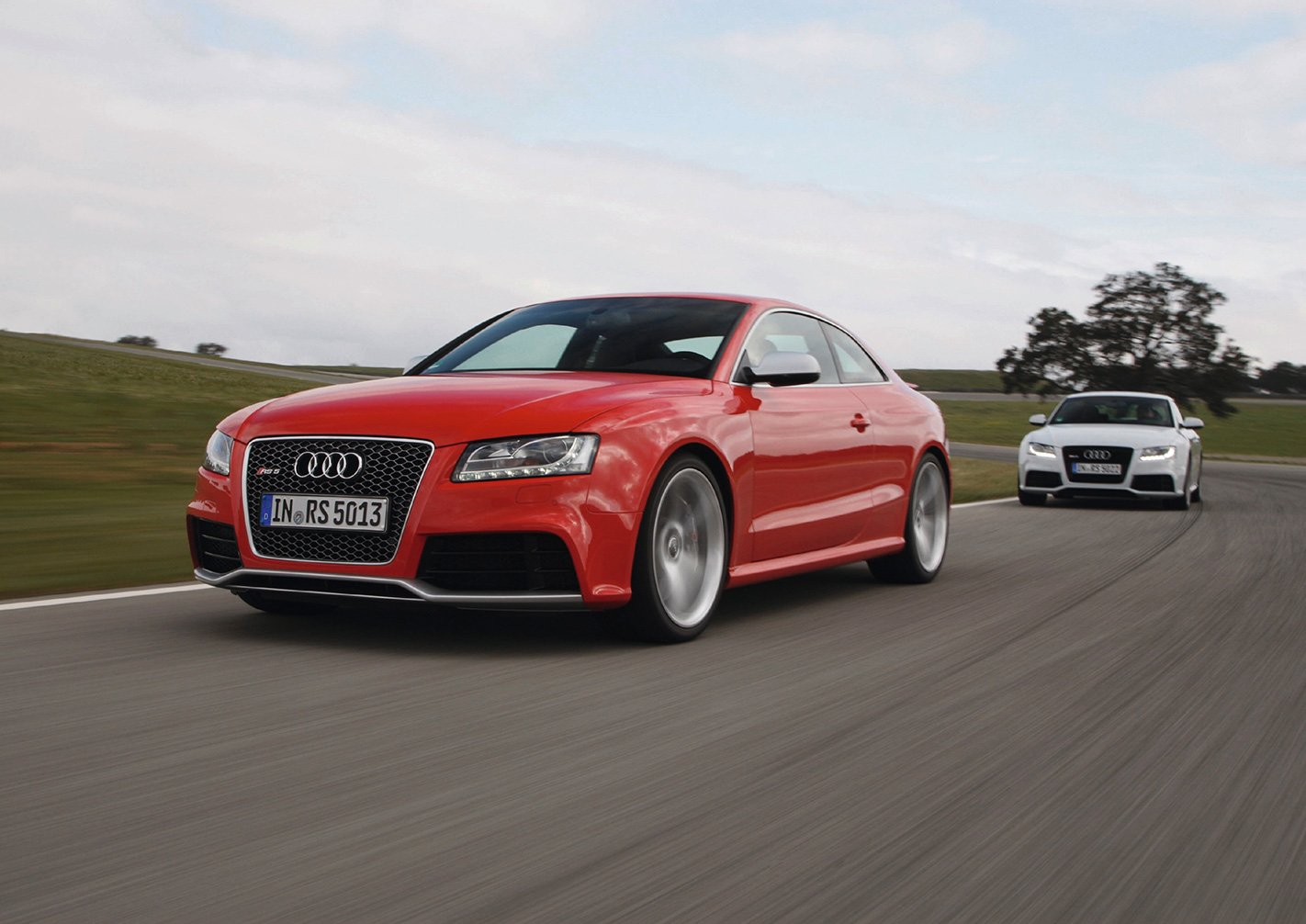
The RS5 debuts the next evolution of quattro all-wheel drive, with three new ingredients that are claimed to make all the difference. First up is a lightweight self-locking crown-wheel centre differential, directing torque up to 70 percent forward or 85 percent rearward, with a static 40:60 split. Next is Audi’s “electronic torque vectoring” function, which, at adhesion’s limit, can decelerate the unloaded inside wheel(s) on the limits, aiding turn-in.Lastly is a new optional sport rear differential, which offers improved poise. The combined result is a new degree of cornering flatness; very little oversteer, even less understeer, and sure-footed all-weather traction. Too boring? Dialling up ESP Sport provides a more emphatic throttle-steer effect.
New springs, dampers, anti-roll bars, a 20mm lower ride height and firmer software calibration round out suspension changes. Standard hoops are 265/35 R19, though our test car ran cost-optional 275/30 R20 Pirelli P Zeros. Thicker, larger-diameter (365mm) steel discs with eight-pot calipers up front are new, or you can plump for the optional huge 380mm lightweight carbon-ceramic discs with eight-potters.
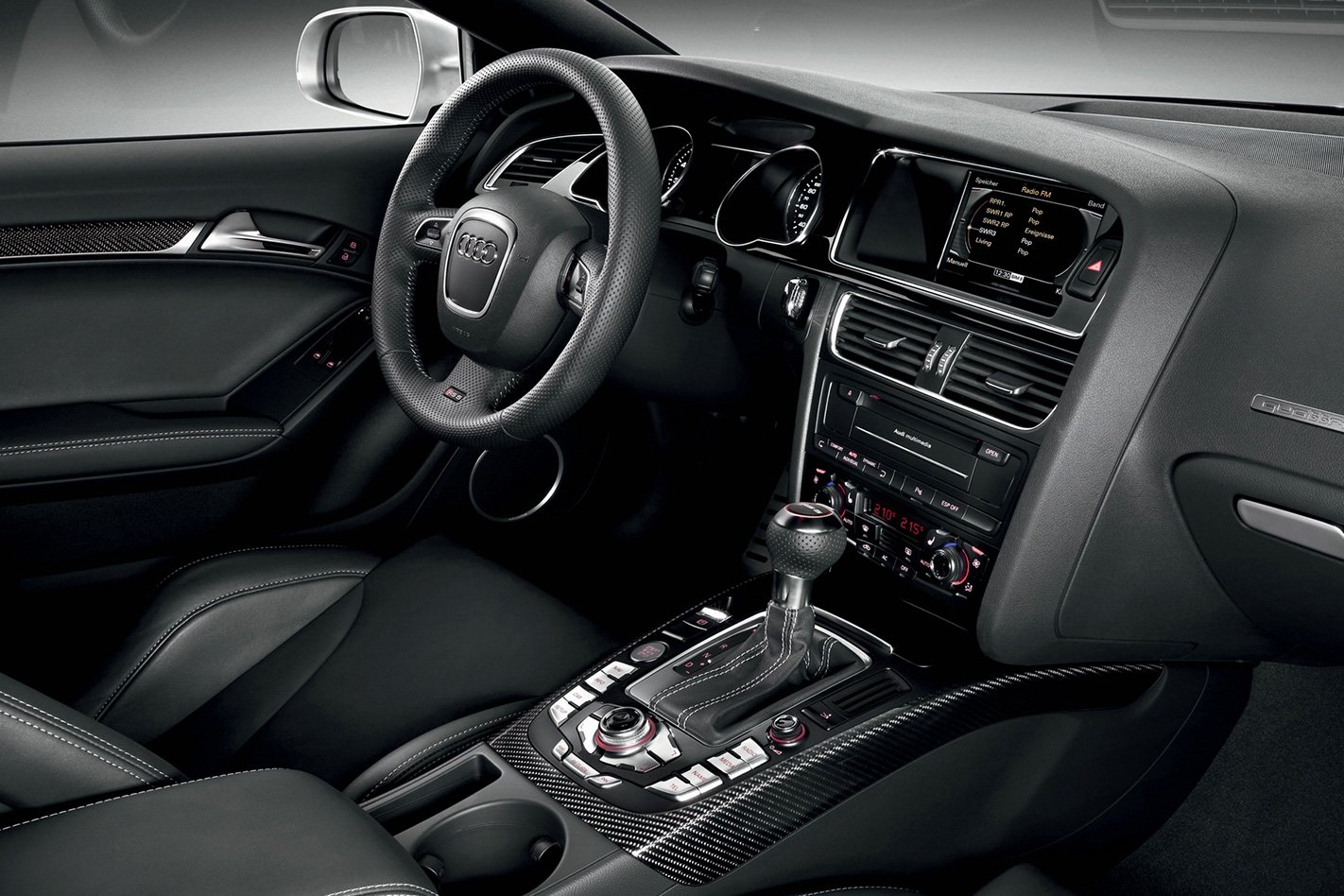
Bespoke RS styling elements include a new grille pattern, enlarged air intakes, restyled bumpers front and rear, plenty of aluminium brightwork, two large oval tailpipes, a rear diffuser and a full aero kit that ensures an impressive drag coefficient of 0.33. A motorised tail spoiler extends at 120km/h and retracts at 80km/h.Inside are electric sports seats trimmed in an Alcantara/leather mix but you can specify snug racing buckets or generously upholstered ventilated comfort seats. The RS instruments wear different graphics, and there is plenty of supple leather, shiny carbonfibre and piano black panelwork to please the eye and to justify the premium price.
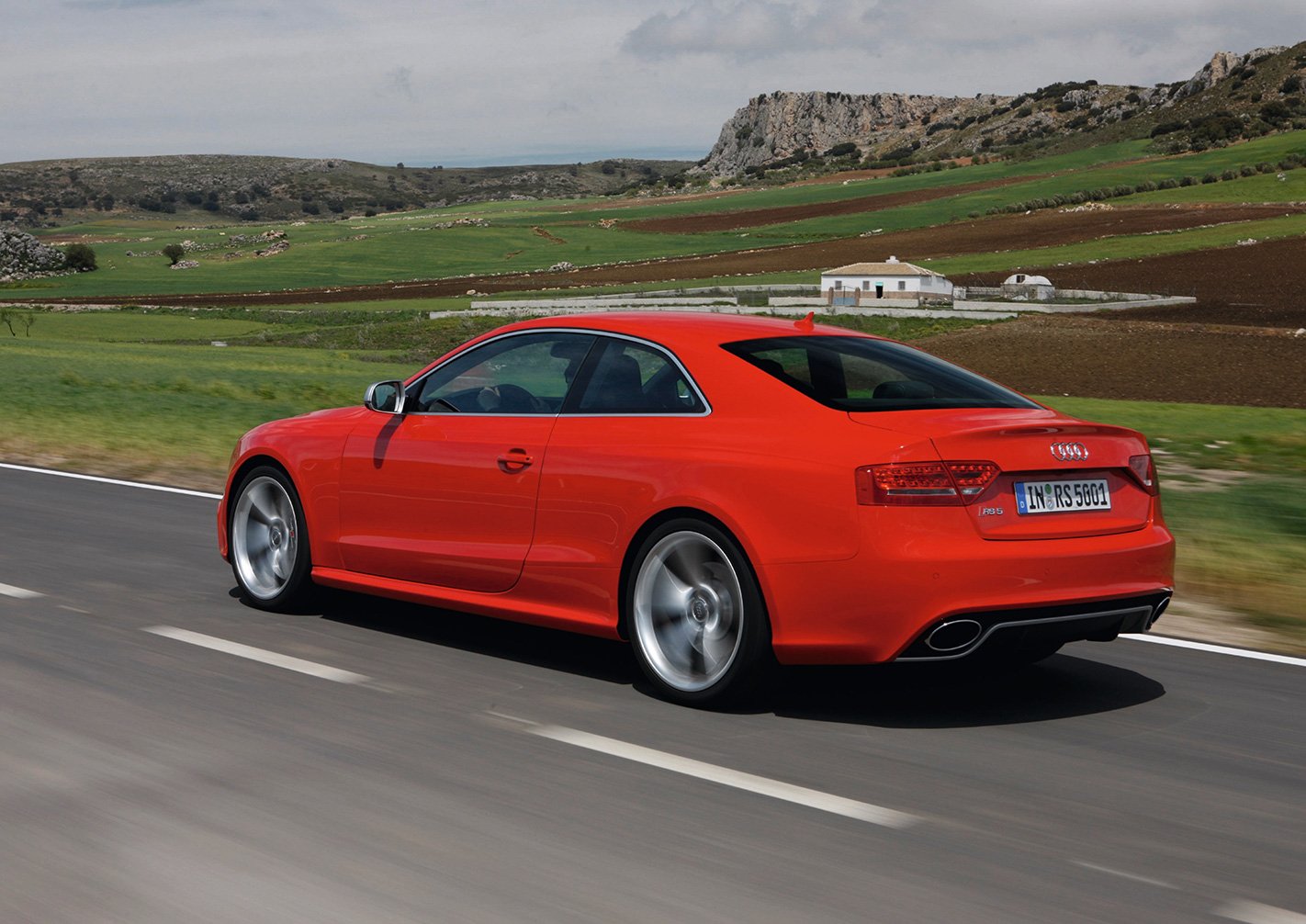
It feels more like a downsized RS6 than the grown-up RS4 you’d hope for. What we loved about the old RS4 is that it wasn’t inflicted with the behaviouristic manipulations forced upon the end user by its BMW rival, the M3. With Drive Select, it’s difficult to befriend an automobile which comes with as many in-built push-button character changes.In theory, Drive Select combines the best of all worlds. In reality, it makes falling in love with this car a combination-dependant trial-and-error experience which can be enlightening, entertaining or frustrating.In view of the Audi’s awesome on-paper form and favourable dry driving conditions, we set off with the engine/exhaust, the transmission and the sport differential in Dynamic mode. And then we lowered the ESP threshold from all chips aboard to the Sport program’s limited liability setting.
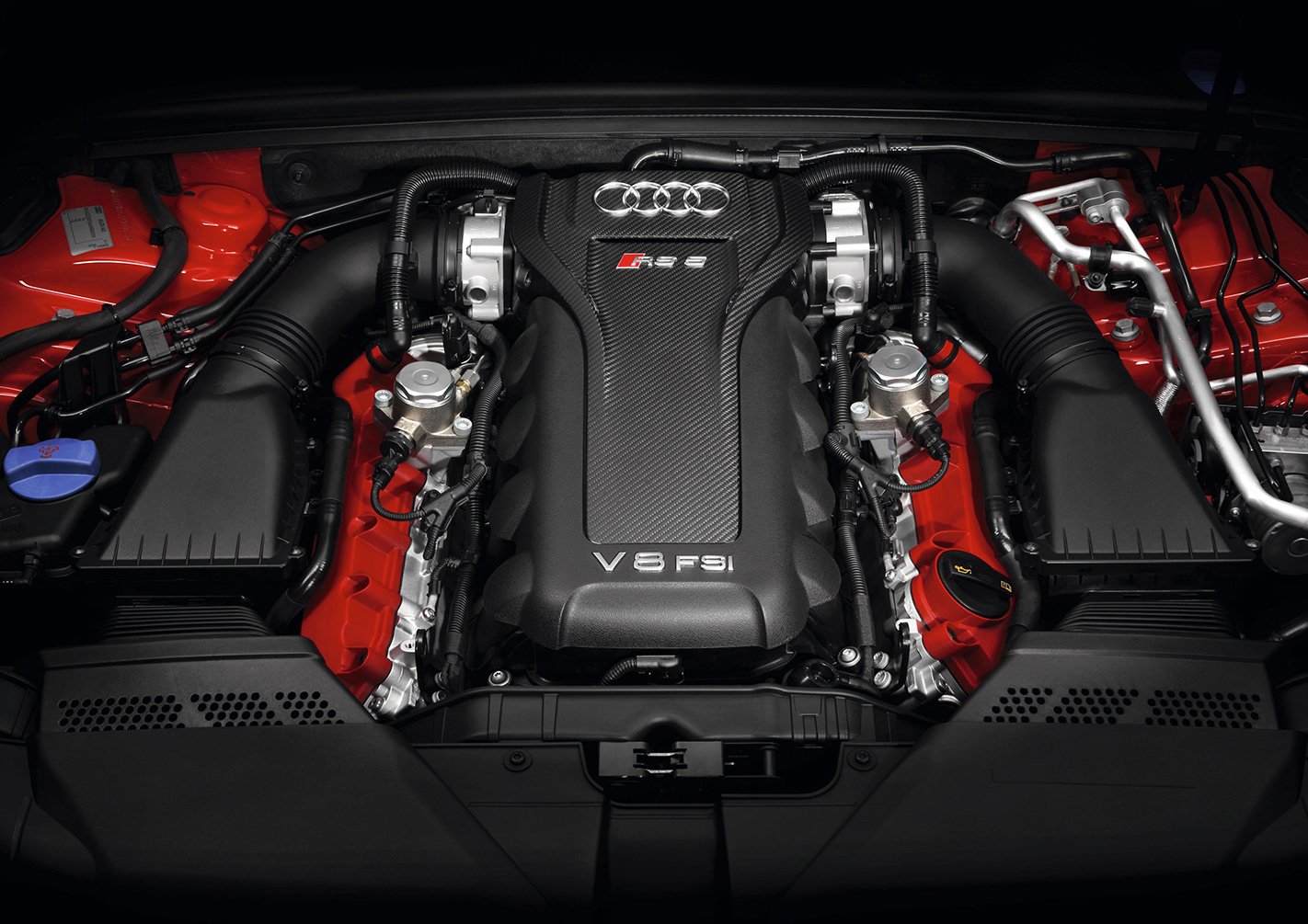
Shifting manually (in Dynamic mode) on a hard punt, it’ll try not to change up into sixth or seventh gear, which sounds and feels fast but isn’t a particularly pragmatic proposition.The choice of engine/exhaust calibrations is straightforward: Comfort means don’t bust your guts, Auto means wait for the next kickdown order, Dynamic means tighter reins and matching revs and ratios for maximum punch. Keep the revs up and the RS5 is slingshot-like explosive off the mark. Up to 110km/h, it pairs commendable urge with laudable high-end grunt.
Above 160km/h, however, the energy curve drops slightly as the car encounters all sorts of mechanical, aerodynamic and friction-related impediments. It just loses its punch. And the substantial kerb weight of 1725 kilos doesn’t go unnoticed.Absent from our test car was the dynamic steering and dynamic roll control (DRC) device that, if equipped, cross-links four adjustable dampers for even less body roll and, allegedly, more compliance. But even without either gizmo, the RS5 is not only a true street-carving champ, it’s a new pace-setter for grip, traction and roadholding.
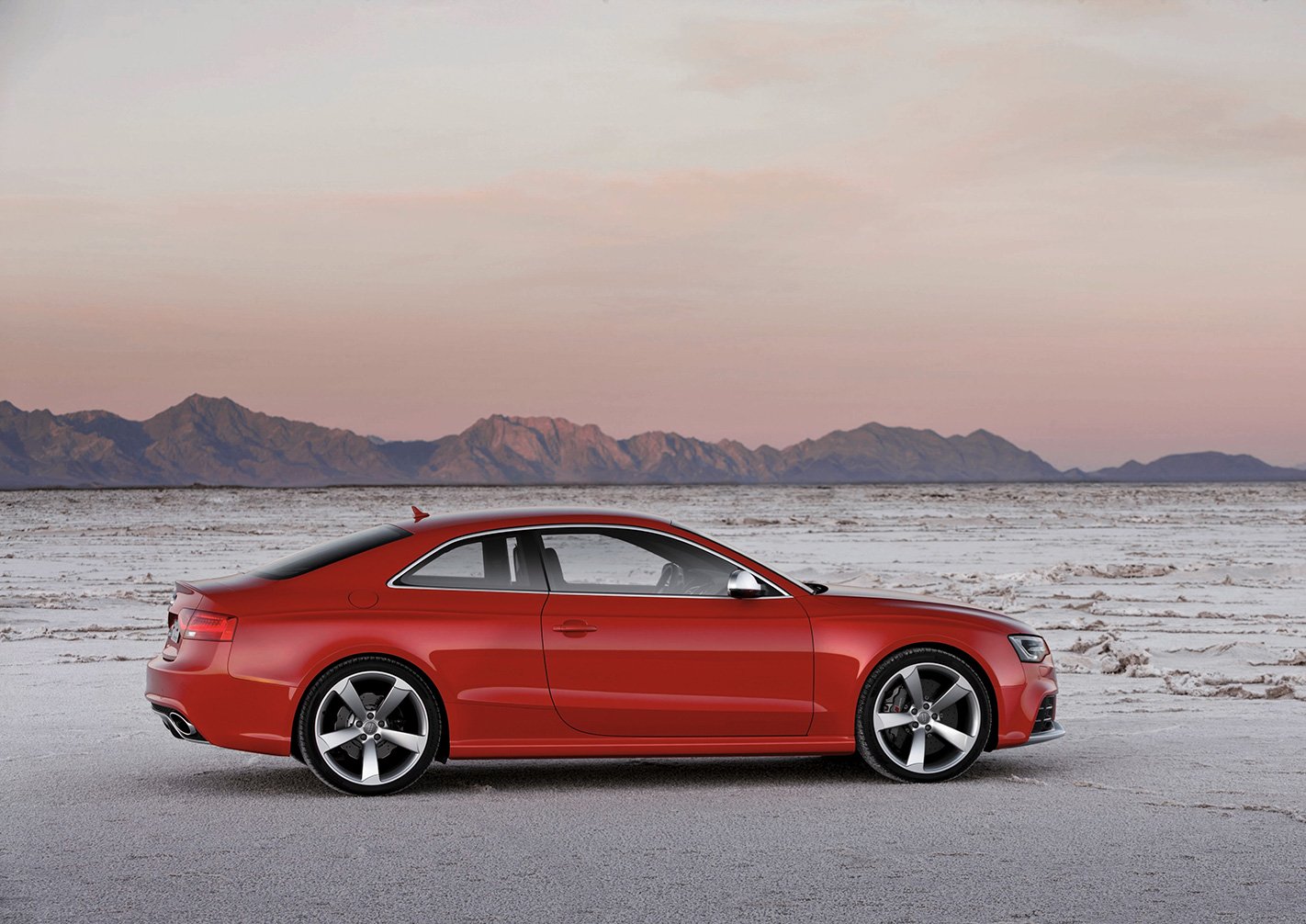
And though the concentrated high technology is fascinating, it’s also slightly frightening. The steering will, for instance, assume one of three different preselect attitudes, no matter whether you are happy with the base servotronic or did opt for the extra-cost dynamic device.It would probably take a race driver on a racetrack to qualify the added value of the Sport differential, which offers three settings and takes the steering and yaw angles, the lateral acceleration and the vehicle speed into consideration.But on a winding country road, the rear diff, quattro system and sports suspension create an almost eerie virtual reality cornering effect. Can these corner speeds be true? Are the RS5 and Kacher still on the same planet? What happened to all the familiar warning signs like body roll, tyre squeal, lift-off oversteer, the steering firming up or becoming lighter?
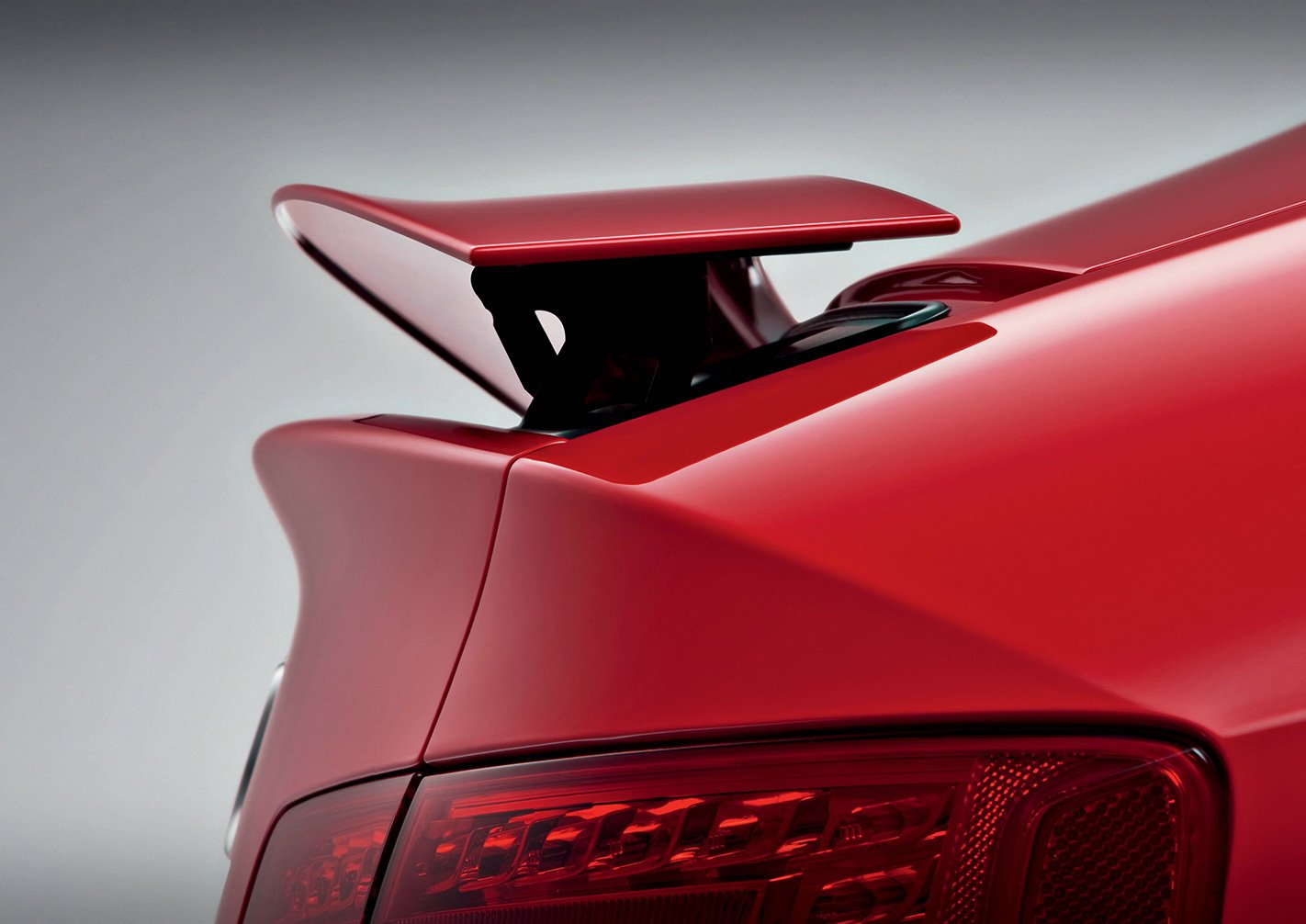
This is obvious in the case of the dynamic steering, where engineers have found ways and means to massage its action in three almost equally compromised directions. Comfort is stiff, Dynamic is even stiffer, and Auto varies between the two poles that are disappointingly lifeless and uninspiring.As a result, the helm feels heavy and doughy, almost seems to entertain a force of its own, lacking fluidity and progression. This set-up is quite clearly more interested in execution than in communication, thereby confirming earlier impressions which suggested big brother, not close friend.
Like the chassis, the steering overachieves and underdelivers at the same time. The network of filters takes out most of the vagaries and the imponderables, but at the same time it simplifies the car’s complex character and personality.
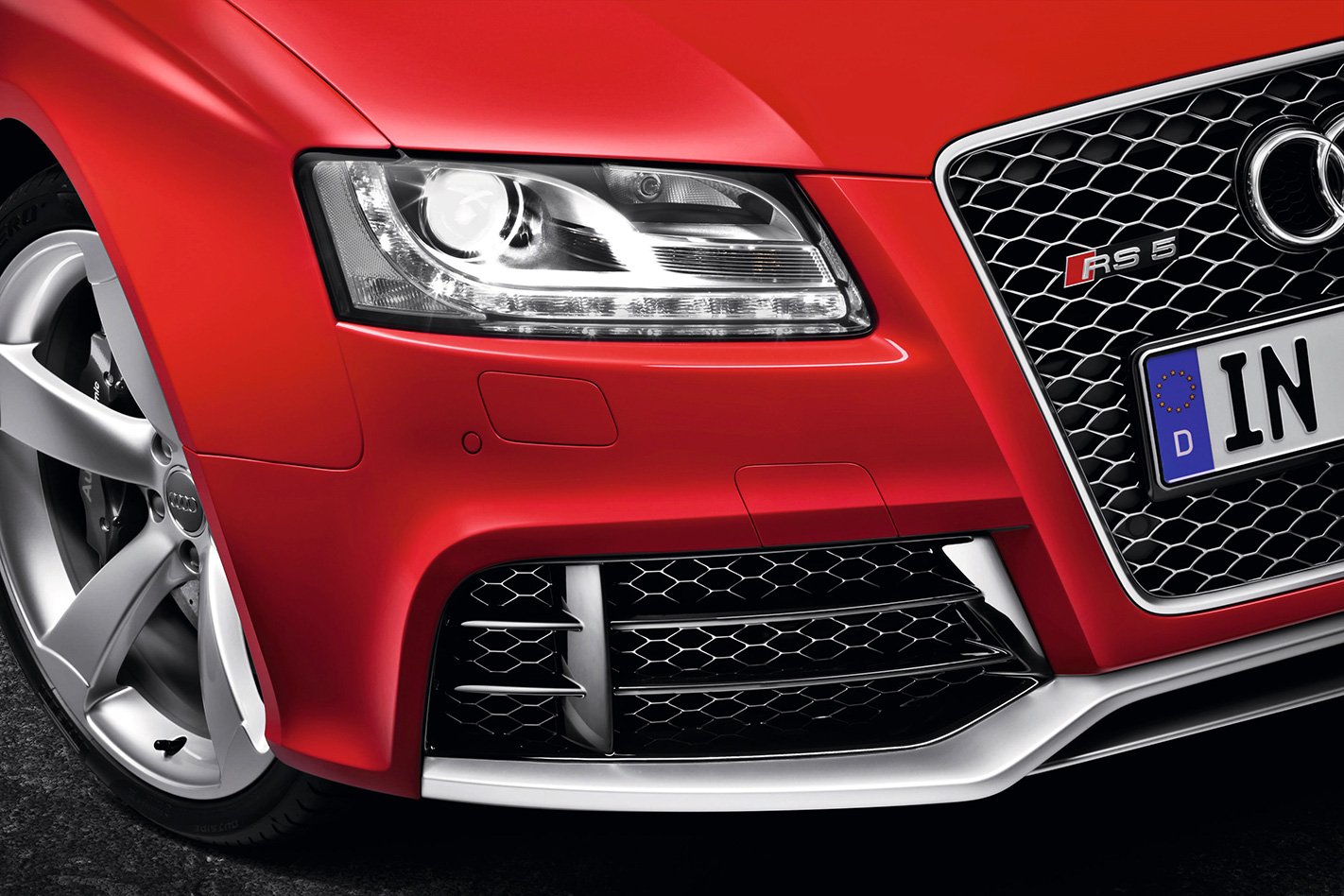
Check out more MOTOR reviews
I, for one, certainly need more time to adjust to this new quality of focused, fuss-free performance. More time to compile a Drive Select cocktail that really works for me. More time to come to terms with this radical and reduced minimum-input, maximum-result approach. More time to fully explore the suction-cup cornering grip, the time-warp deceleration and the induction-loop stability.On a corporate level, perhaps Audi needs more time to revive its allegedly sidelined anniversary project, a shortened, lightweight A4 quattro powered by a five-cylinder engine on steroids, featuring S-tronic, no-frills steering and a non-adjustable suspension. Alternatively, there may even be scope for a carefully decontented, back-to-the-roots 350kW RS5-plus.
